Contributed by Ali Marshall
The Gilttoyees is a classic North Coast kayaking adventure. The whitewater is good, not amazing, but the combination of the coastal wilderness, the scenery and the whitewater makes for an incredible trip. This watershed is located in the Foch-Gilttoyees Provincial Park. You won't see any sign of human development until you reach the cabin at the pickup point on the ocean. This river valley is a historic trade route for First Nations between the Douglas Channel and the Skeena River. It is called as a 'grease trail', from the oolichan fish oil that was transported along it. This is grizzly bear and salmon habitat so please be bear aware.
Logistics are significant. Organise a helicopter in Terrace. They have to have a permit to be able to land in any of the BC parks. In BC you cannot fly passengers and a sling full of kayaks at the same time. Have someone take your kayaks and gear to a clearing near the Exchamsiks River (40 minutes west of Terrace) and have the kayaks pre-loaded in a net ready for pick up. Fly the passengers to the Gilttoyees from Terrace, and then have the pilot fly down the Gitnadoiks River to the Exchamsiks and have him pick up the net full of gear to bring back to the put in. This is the fastest and most cost effective way to fly in. The flight is SPECTACULAR.
You are dropped off in a beautiful sub alpine valley. You paddle for an hour or so before the rapids in an area that is not dissimilar to Yosemite. There are only small stands of trees at this stage as nearly the entire valley is an avalanche path. The whitewater is steeper and bigger than it looks from the air. If you don't want to paddle class 5 then you will be walking most of the rapids. After a beautiful bedrock slide the river plunges over a 100 foot waterfall, which you portage on river left. Camp 1 is just around the corner and it is stunning.
The whitewater on the second day is much like the first with a mix of rapids, slides and falls. When the salmon start to appear you know the whitewater is coming to an end. The forest at this stage is lush and the large cedar and spruce trees appear. After an hour or so of beautiful flatwater you reach the tidal estuary. A couple of kilometers past the estuary, on paddlers left is an open cabin that you can stay in. There are often fishermen there. This is the perfect place to get picked up by your boat. A 50 km ride will have you back in Kitimat.
Don't forget to stop at the 'park n huck' Jesse Falls on your way back. It is a falls that drops into the ocean just east of the Gilttoyees inlet.
A story: As we were about to land the helicopter, at the beginning of our trip, one of our team saw that the river was loaded with salmon. We were pretty sure salmon couldn't swim up 100ft waterfalls and after checking the GPS we found that we were at the last rapid on the run. We nearly completed the shortest and most expensive fly in trip ever.
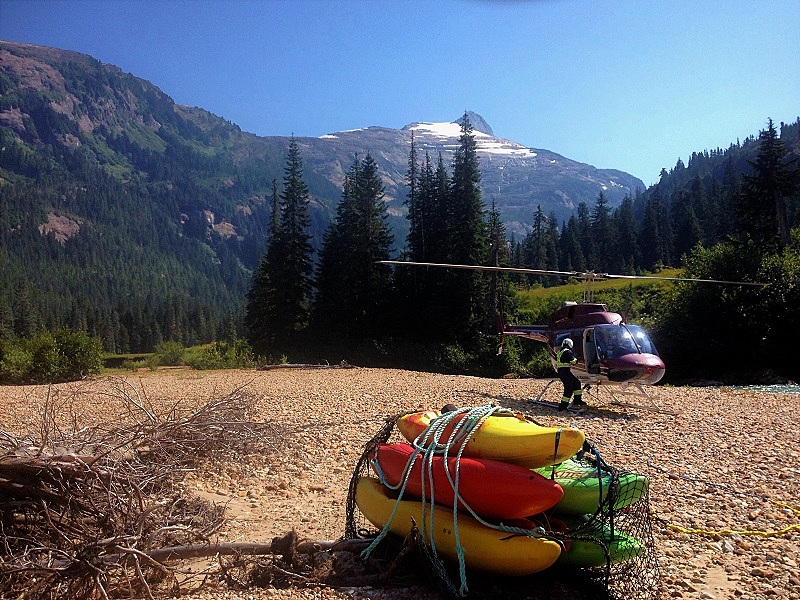
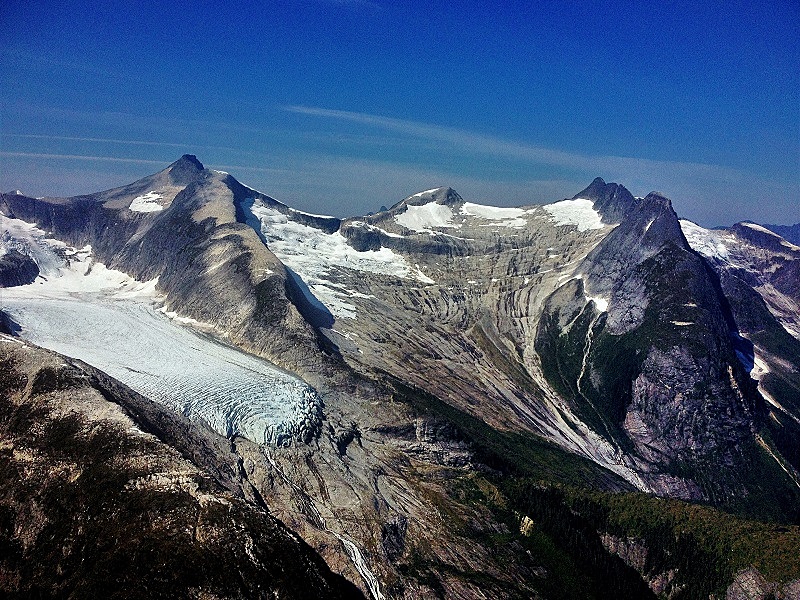
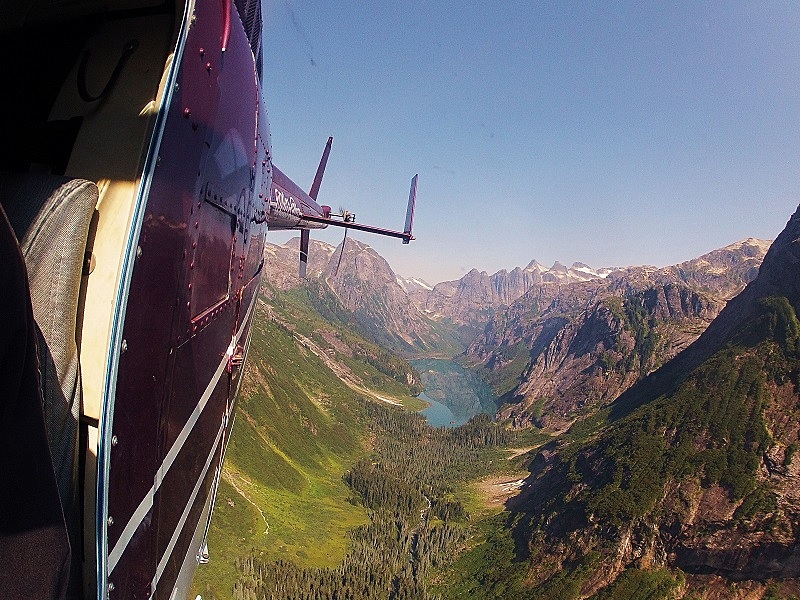
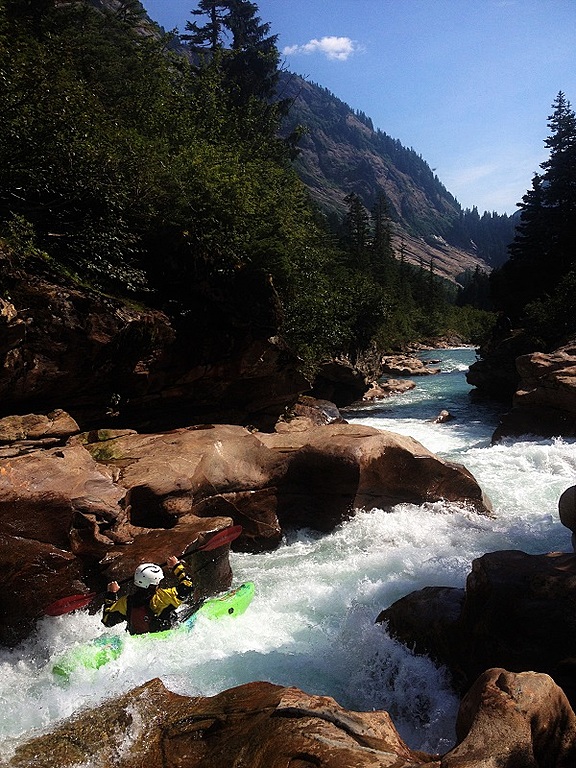
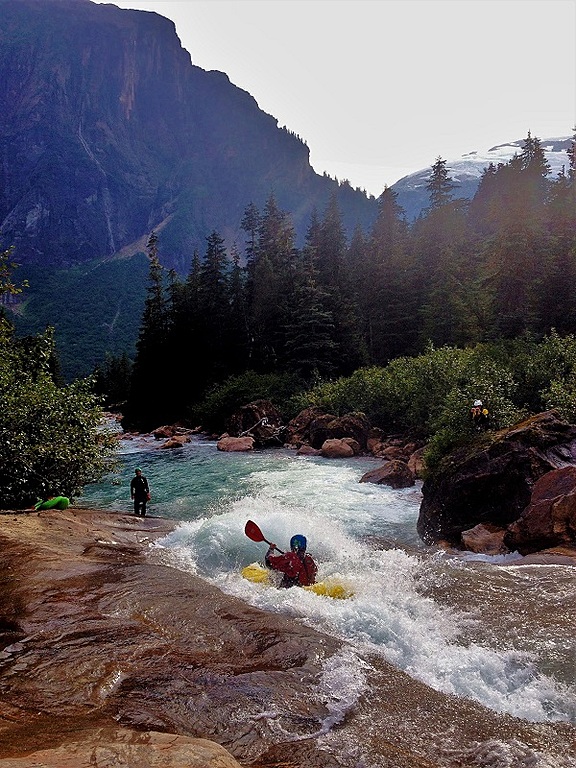
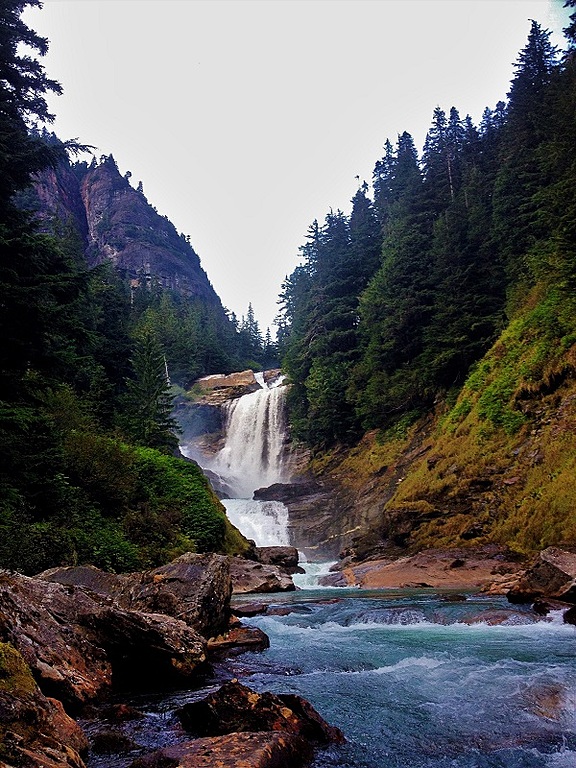
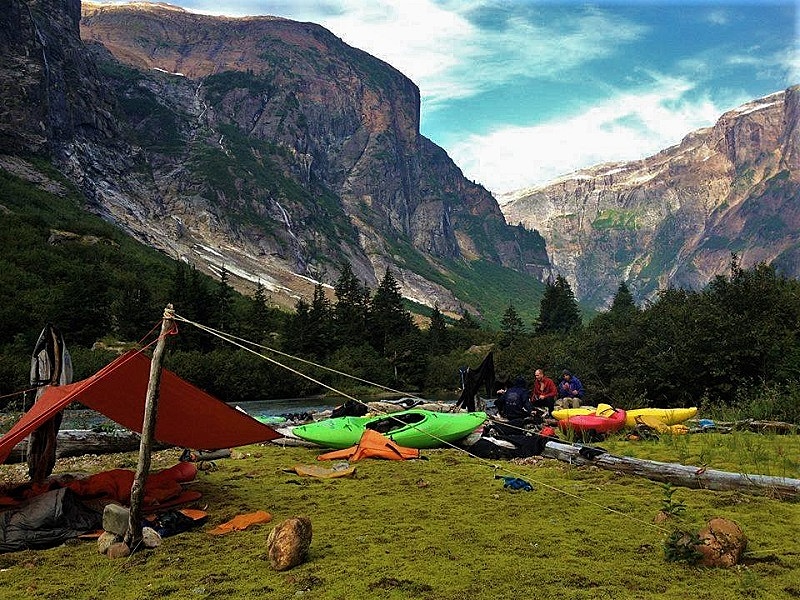
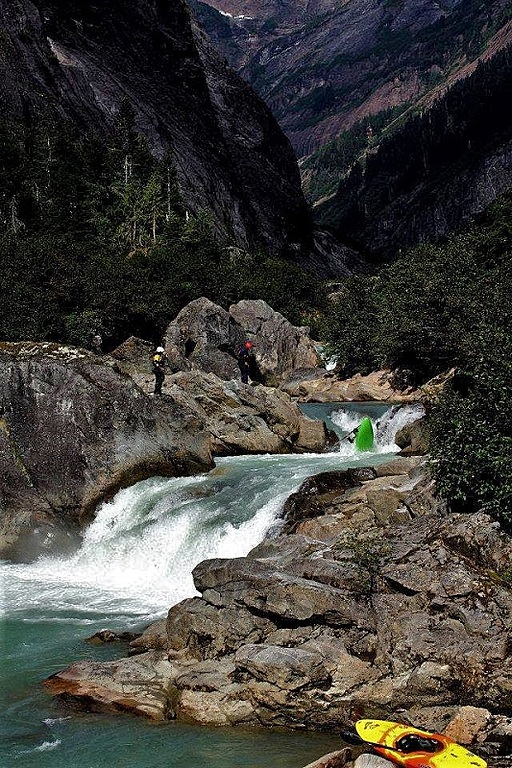
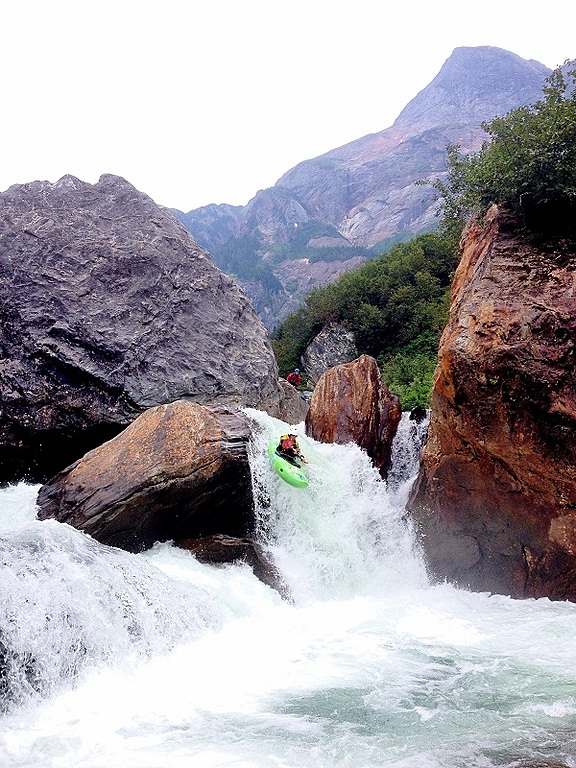
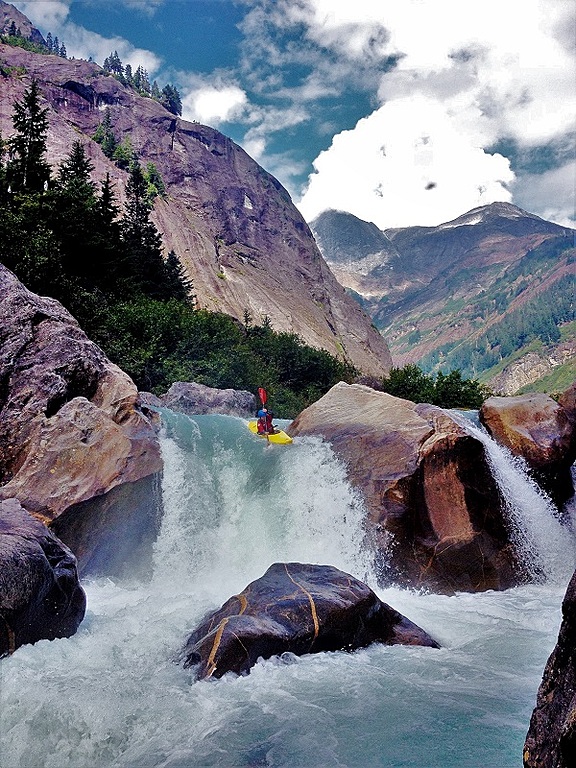
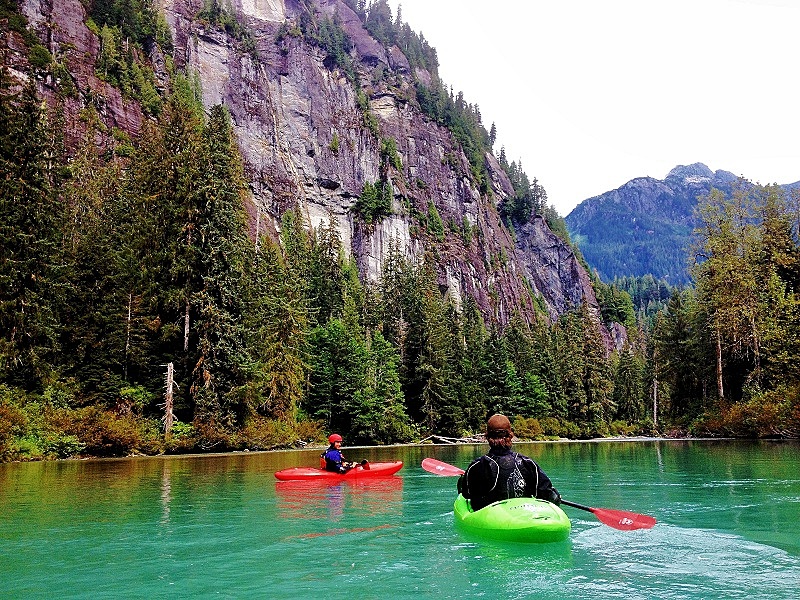
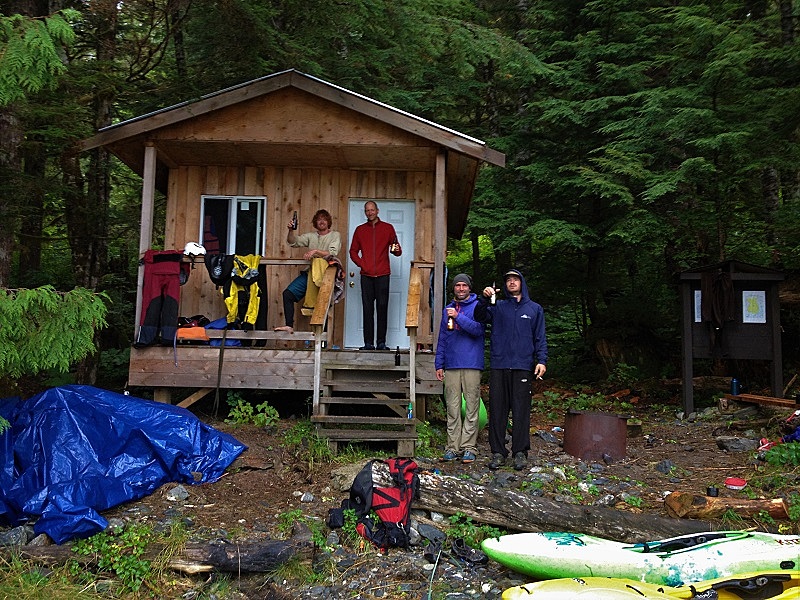
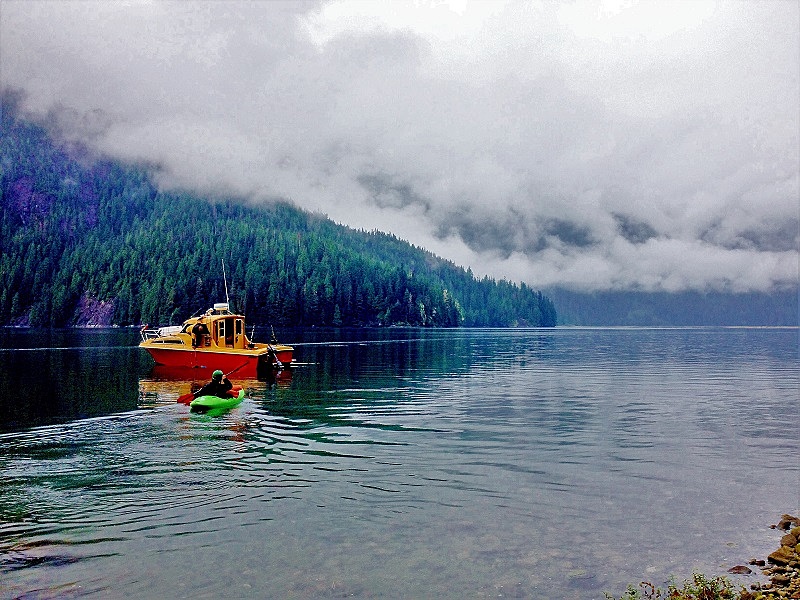
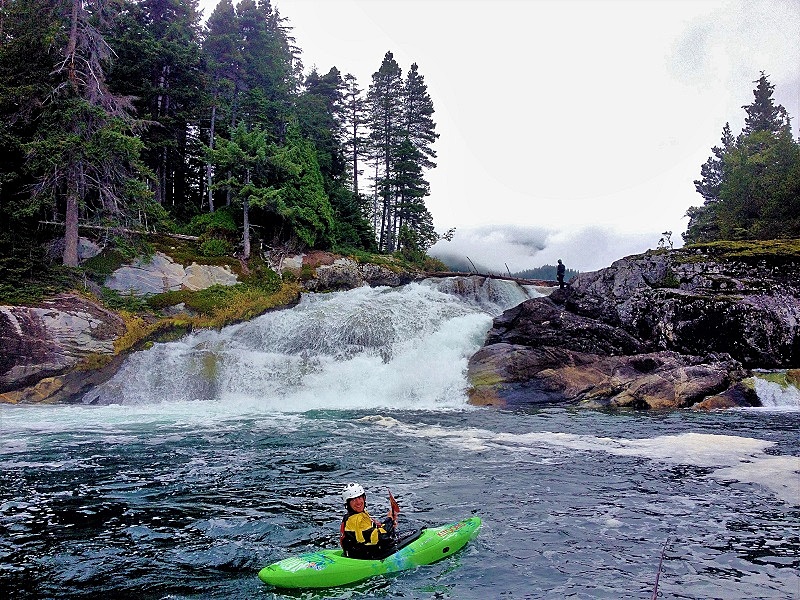
Gilttoyees Trivia
- The group of Jason Cathers, Joe Kotai, Tim Johns and Dan Nieckarz completed the first descent of the Gilttoyees in 2008.